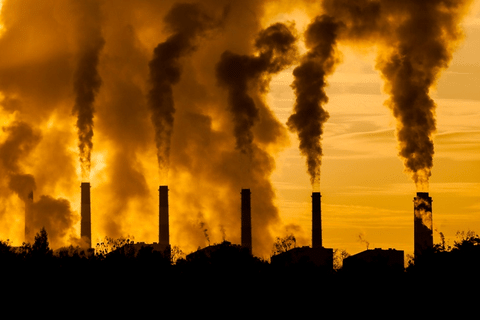Air Pollution
Key Notes :

- Definition: Air pollution refers to the presence of harmful substances in the Earth’s atmosphere that can be detrimental to human health, the environment, and other living organisms.
- Sources of Air Pollution:
- Natural Sources: Volcanic eruptions, dust storms, wildfires.
- Human Activities: Industrial processes, transportation (cars, trucks, airplanes), burning fossil fuels (coal, oil, and natural gas), agriculture (e.g., pesticides), and construction.
- Types of Air Pollutants:
- Particulate Matter (PM): Tiny particles in the air from combustion processes.
- Ground-Level Ozone (O3): Formed by chemical reactions between pollutants in sunlight.
- Carbon Monoxide (CO): Produced by incomplete combustion of fossil fuels.
- Sulfur Dioxide (SO2): Released from burning coal and oil.
- Nitrogen Oxides (NOx): Emitted from vehicles and industrial processes.
- Volatile Organic Compounds (VOCs): Released from paints, solvents, and vegetation.
- Health Effects: Air pollution can lead to respiratory problems (like asthma), cardiovascular diseases, lung cancer, and even premature death. Children and the elderly are more vulnerable.
- Environmental Impact:
- Harm to ecosystems and wildlife.
- Acid rain formation due to sulfur dioxide emissions.
- Damage to buildings and structures (e.g., historic monuments).
- Control Measures:
- Regulations: Laws and regulations to limit emissions from industries and vehicles.
- Alternative Fuels: Promoting cleaner energy sources like electric vehicles and renewable energy.
- Public Awareness: Educating people about the consequences of air pollution and how to reduce their contribution.
- Global Concern: Air pollution is a global issue that affects not only individual countries but the entire planet. International cooperation is essential to address it effectively.
- Personal Actions:
- Reduce vehicle use by carpooling, using public transport, or biking.
- Conserve energy to reduce emissions from power plants.
- Plant trees and support green initiatives to improve air quality.
- Monitoring and Measurement: Air quality is measured using instruments like air quality index (AQI) monitors, which provide real-time information about pollution levels in specific areas.
- Future Challenges: As the world continues to industrialize and urbanize, controlling air pollution becomes increasingly important to protect human health and the environment.
Let’s practice!

